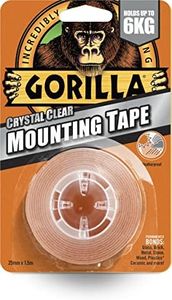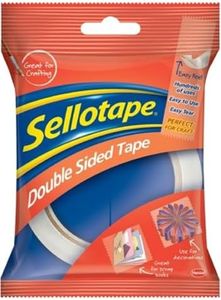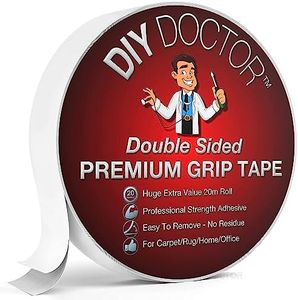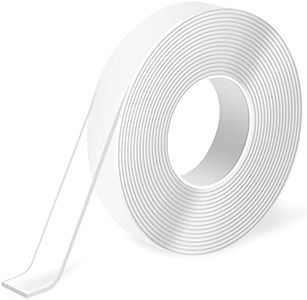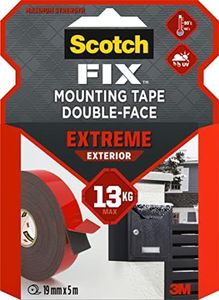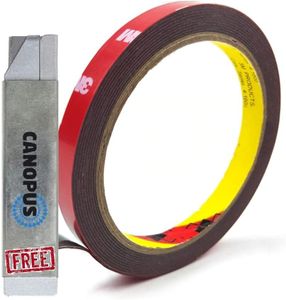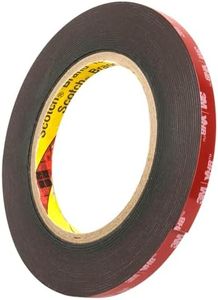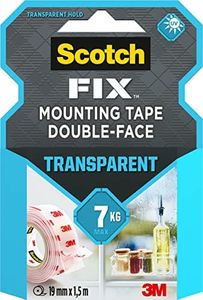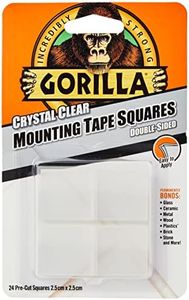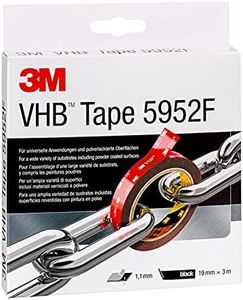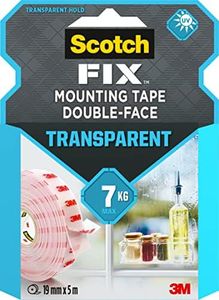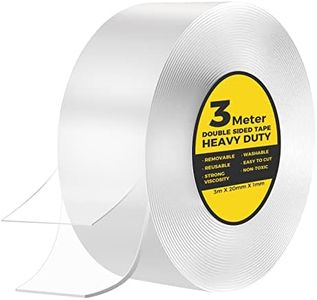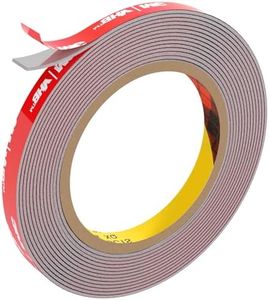We Use CookiesWe use cookies to enhance the security, performance,
functionality and for analytical and promotional activities. By continuing to browse this site you
are agreeing to our privacy policy
10 Best Double Sided Tapes
From leading brands and best sellers available on the web.Buying Guide for the Best Double Sided Tapes
When choosing a double-sided tape, it's important to consider the specific needs of your project. Double-sided tapes are versatile tools used for bonding, mounting, and crafting. They come in various types, each designed for different surfaces and conditions. Understanding the key specifications will help you select the right tape that offers the best performance for your intended use.Adhesive StrengthAdhesive strength refers to how well the tape can stick to surfaces. This is crucial because it determines the tape's ability to hold items together. Adhesive strength can range from light to heavy-duty. Light adhesive is suitable for temporary applications or delicate surfaces, while heavy-duty adhesive is ideal for permanent bonding or rough surfaces. Consider the weight and type of materials you are bonding to choose the appropriate adhesive strength.
Tape ThicknessTape thickness affects both the strength and flexibility of the tape. Thicker tapes generally provide stronger bonds and are better for uneven surfaces, while thinner tapes are more flexible and less visible, making them ideal for crafts or applications where appearance matters. Assess the surface texture and the need for flexibility to determine the right thickness for your project.
Temperature ResistanceTemperature resistance indicates how well the tape can withstand different temperatures without losing its adhesive properties. This is important for applications exposed to extreme heat or cold. Tapes with high temperature resistance are suitable for outdoor use or in environments with fluctuating temperatures. Consider the environmental conditions where the tape will be used to ensure it maintains its bond.
Surface CompatibilitySurface compatibility refers to the types of surfaces the tape can adhere to effectively. Some tapes are designed for specific materials like glass, metal, or plastic, while others are more versatile. It's important to match the tape to the surface to ensure a strong bond. Identify the materials you will be working with and choose a tape that is compatible with those surfaces.
RemovabilityRemovability is the ability to remove the tape without leaving residue or damaging the surface. This is important for temporary applications or when working with delicate surfaces. Some tapes are designed to be easily removable, while others are meant for permanent use. Consider whether you need a permanent or temporary bond to decide on the removability feature.
